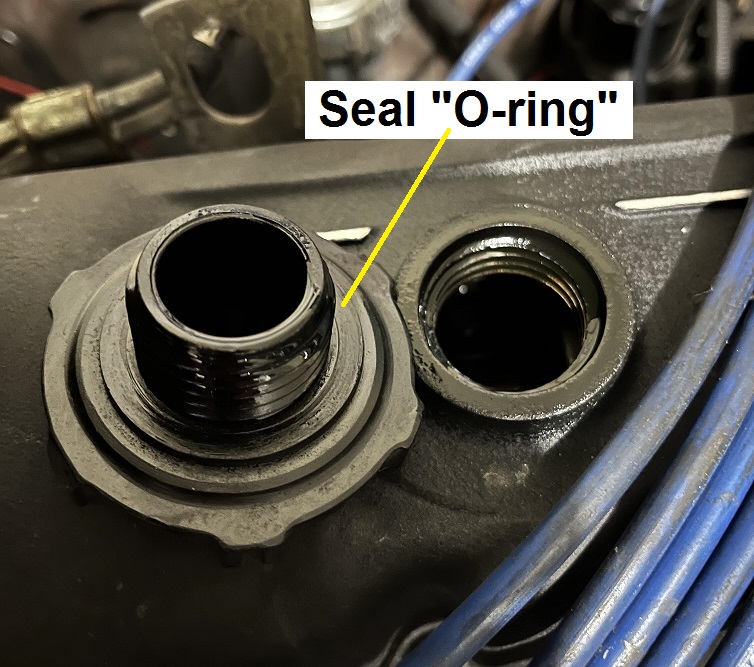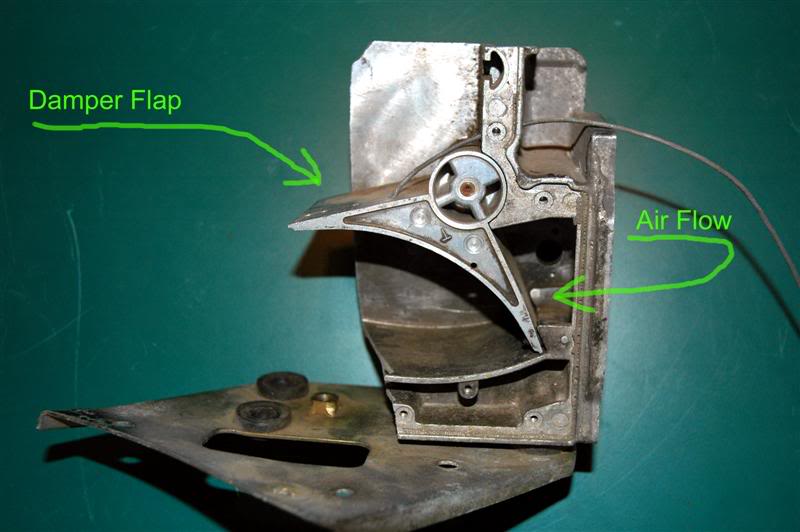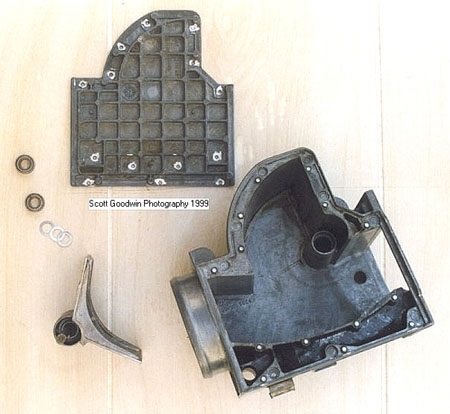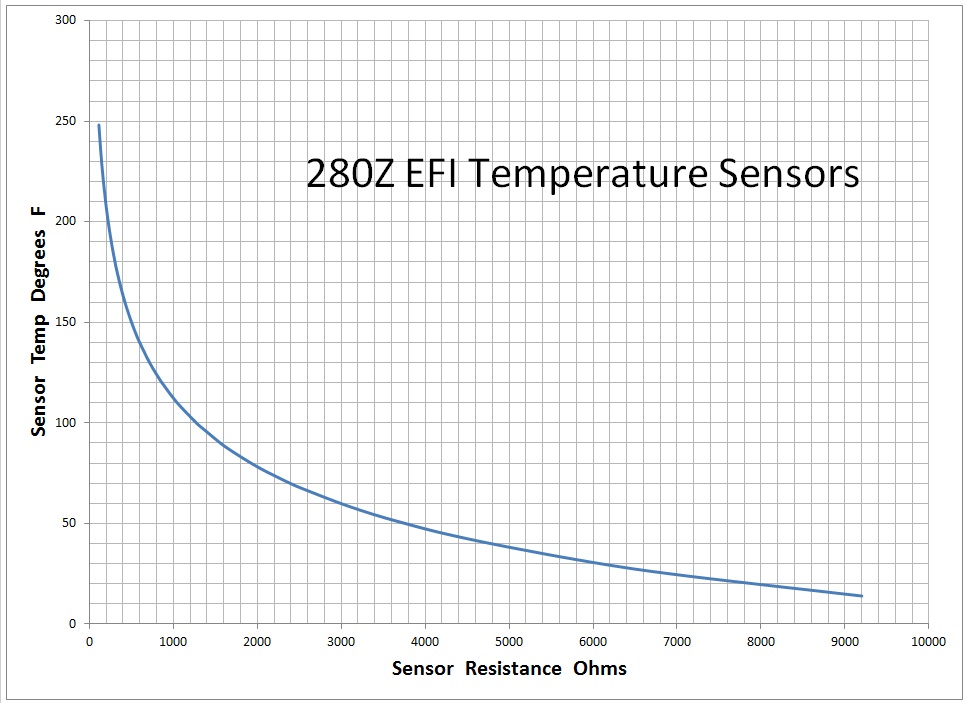Everything posted by Captain Obvious
-
AFM Sticky Spot
I got lucky. When the factory set the proper position, they put a blob of silicone (or something) onto the clamp that holds the gear in position. The lucky part was when the PO moved the gear, it split the silicone blob into two pieces. One part on the clamp, and one part on the gear. I rotated the gear back such that the two halves of the silicone blobs lined up again. I've been inside other AFM's and the blobs are gone completely. Thankfully on this AFM, the split blob was an easy way to tell where the gear belonged.
-
AFM Sticky Spot
Haha! The car this is going into is running uber lean, and one of the other things I discovered while poking around with this AFM is that someone had been in there before and had adjusted the spring gear to be about ten teeth leaner than when it left the factory. I'm not sure the AFM spring is the only thing going on with the car running lean, but it's certainly something that needed to be addressed. I put the gear back to factory position and we'll see what happens when I seal this AFM up and get it back in the car. So this AFM has clearly been messed with and abused in the past by a PO. Sticky and lean.
-
AFM Sticky Spot
OK, so the next step in the ordeal was a success. I drilled and tapped one of the places that used to be a rivet. I did one of the positions along the top. Looks like this: So now there are three screws that hold the cover on. One along the top and two near the bottom: This is just a test fit with no sealant, so the next step will be to take the cover off again and put some silicone on the sealing surface and then screw it together "for good". And after that, put it onto the car and see what happens!!
-
Impossible Oil Leak?
Well "hammer" and "bash" aren't the words that come to my mind... I was thinking "gently pry" with a "small screwdriver" or "pointy pick" to identify where the seams are. But whatever works! And since the cross section of the original isn't round, I'm not sure sticking an O-ring in there is going to work. It it were me, first thing I would do is clean the coating off the valve cover and use a flat file to dress the surface where the cap is supposed to seal. I don't know if it's a trick of the light, but in the pic you posted, that sealing surface looks to have imperfections on the one side. Pitting or other imperfections on the valve cover? At eight and nine-oclock in your pic? :
-
AFM Sticky Spot
So I used a red Sharpie and marked the inside of the AFM where the interference was occurring. This is my target for bashing. Here's my target to push the case back out a little bit: And here's my drift tool. I rounded the end to try to minimize digging in and gouging the aluminum: In position and ready for an adjustment whack: And the clearance after a couple percussive maintenance adjustments It'still pushed in a little, but it clears the AFM vane: So now the AFM moves smooth for the entire sweep. Next, I'm going to work on how to put the side cover back into place. The plan is to drill and tap at least one of the rivet locations along the top side. The bottom already has two screws, so I figure if I add a third along the top and silicone it into place, it should be good enough. Certainly better than the broken paperweight I started with.
-
AFM Sticky Spot
Thanks zKars!!
-
Impossible Oil Leak?
-
Impossible Oil Leak?
Haha!!! Mostly just lucky. And yes... The term "O-ring" typically evokes a picture of a soft pliable contraption with a circular cross section. The seal on the filler cap is neither soft, pliable, or circular in cross section. It may have been soft and pliable at one time, but it's not now.
-
AFM Sticky Spot
And once the cover was off, the problem was obvious. Here's a pic of the damper vane. I'm back lighting the gap between the movable vane and the case / body of the AFM. This is a pic when there is very little air throughput and the vane in the "mostly closed" position: And here's a pic of the damper vane at about mid-scale. Note how the vane is rubbing against the inside of the case: And then here is the damper vane "beyond" the sticky spot. Note that there is a gap again: So mystery solved.... The case is bent. Pushed in at that spot. Like someone dropped it or hit it with something big enough to dent the case. Note that I looked it over thoroughly from the outside and did not detect the dent. I did find an anomaly on the outside of the case, but it's quite subtle. Here's a pic of the outside of the case after some "block sanding" in an attempt to highlight the problem area. The clean spots were wiped by the sanding, but the darker spots (still dirty) did not: So, mystery solved!!! I'm going to try to fix it, but ran out of time today. I'm thinking that a few well aimed taps with a ball peen hammer might push the dent back out enough for the damper vane to clear the case.
-
AFM Sticky Spot
Well I went ahead and performed the surgery. Mystery solved. Goes like this: I used a small carbide burr in a Dremel to remove the smoooshed off section of the posts holding the back cover on. Here's a pic of the burr and one of the posts ground off: Worked my way all around the perimeter grinding off the posts. Also took out the two retaining screws: Even after doing that, the cover was stuck fast. The adhesive / sealant they used is quite tenacious, After some experimentation, I found that it was susceptible and softened by carb / brake cleaner. I lightly sprayed around the perimeter a bunch of times waiting a minute or so between rotations for the solvent to work into the seam: Doing that a couple times letting the solvent attack the sealant glue. Then some prying with a small screwdriver: And presto... Cover is off:
-
AFM Sticky Spot
Well it's clear that there were some changes over the years. The one I'm messing with (which should be from a 76) doesn't have all those screws, but instead has posts that have presumably been peened over as rivets, but other than that, I would expect the construction to be pretty similar. Do you still have the one you opened? Got pics?
-
Impossible Oil Leak?
-
AFM Sticky Spot
I've got some old pics that I've hoovered over the years, but it's not like talking to someone who has done it. But here's what I have: This AFM has been cut open with a saw (photo credit unknown): And here's another one that should show how the vane mounts inside the housing. Photo credit on it:
-
AFM Sticky Spot
Well????? Pics or it didn't happen!! You're saying that taking that back cover off did not provide access to the sweep vane?
-
AFM Sticky Spot
There was some discussion about such a maneuver in the past, but I don't know if it ever happened: https://www.classiczcars.com/forums/topic/67674-afm-loose-arm/ @chaseincats And @kickstand80, since he's a big proponent of AFM modifications and adjustment.
-
AFM Sticky Spot
I have heard stories about sticky AFM's in the past, but I have never held one in my own two hands. Until now. So I've got this AFM here that has a binding sticky spot right in the middle of it's travel. I have looked it over very carefully and cannot see any visible explanation for the sticky spot. I'm thinking maybe the damper section of the vane may be making contact up in the belfry area, or the main shaft may be bent. At this point, I'm toying with the prospect of taking the back cover off. I remember some discussion about doing this in the past, but don't remember if anyone has actually gone through with it. Has anyone taken this back side cover off? Mine has two screws at the bottom and a whole bunch of glue around the entire perimeter: Has anyone gone through the operation, and did the patient survive? I mean... This thing is worthless to me in it's current state, but it would be nice if this was more than just an autopsy.
-
Adjusting float level on three screw SU's
It's like one of those bar puzzles. There IS a way to do it without applying significant force. I don't remember which direction you need to rotate the lid, but there IS a way to get the lids off without loosening the whole bowl or damaging anything. That said... The REAL way to check the float level is done with the lids ON. Wet measurement with fuel in the bowl and a clear tube to see the level.
-
Rough running engine with no explanation
My first guess would also be the temp sensor unit. Pull the big connector off the ECU and measure resistance between (harness side) terminals 13 and 16. That should be temp sensor and ground. Looks like this: Compare the resistance measurement result to this.
-
Replacing Air Compressor Pressure Switch - New Switch has Different Turn on/Turn off pressures
Haha! Been laying around for ages is always nice for making a good deal. Nice story. And yes... I would also assume the hydrolic oil in your lift is NON-detergent.
-
Heater Core Alternative - Escort Core into 260/280
Glad to help. I've got factory A/C parts here available for purchase if you're interested. I'm a reasonable drive from you for something bulky, heavy, and expensive to ship. Wouldn't mind seeing one of your other project cars either. Send me a PM.
-
Replacing Air Compressor Pressure Switch - New Switch has Different Turn on/Turn off pressures
I'm no oil expert, but as I understand it, the general theory / consensus is there would be increased wear on the moving components like the crank bearings. Goes like this... The difference between the "detergent" and the "non-detergent" oils is the ability to suspend particulate contaminants in the oil. The automotive oils (detergent) contain additives that are designed to intentionally suspend particulate contaminants in the oil. The expectation is that those contaminants will be removed from the system and trapped in the oil filter. The non-detergent oils are used in applications (like your compressor) where there is no oil filter. The intention is that the particulate contaminants are NOT suspended in the oil, but instead sink to the bottom of the crankcase where they don't do any harm. Those contaminants are removed from the system when you change the oil, or every twenty years when you break the crankcase open and scoop them out manually. If you use detergent oil in something like your compressor, some of the harmful contaminants will be suspended in the oil and continuously circulated through the system where you don't want them. Better to let that stuff settle to the bottom than have it end up in your main and rod bearings.
-
Heater Core Alternative - Escort Core into 260/280
Yes. This whole box: Goes here: Now... Since your car came from the factory without A/C, there is supposed to be a simple hollow duct box sitting there, but I don't know what they did for your aftermarket A/C.
-
My Throttle Cable Conversion
I did a couple different iterations up at the throttle body. The first version was to make a new piece of linkage that fit onto the original throttle that allowed for the use of the cable. And things spiraled out of control from there. The current (and hopefully last) revision is to convert over to a Nissan Sentra throttle body that originally used a cable pull. Let me look back through my pics and see what I have.
-
1971 HLS30-14938 "Lily" build
-
Arrows on the factory U-joint castings - what do they mean?
Yeah, that's done for. I'm no bearing expert, but I believe that's known as "spalling". However, at this point, if it were me, I'd take the opportunity to check the body hardness and see if it was ever a possibility to drill and tap. I gots to know.













